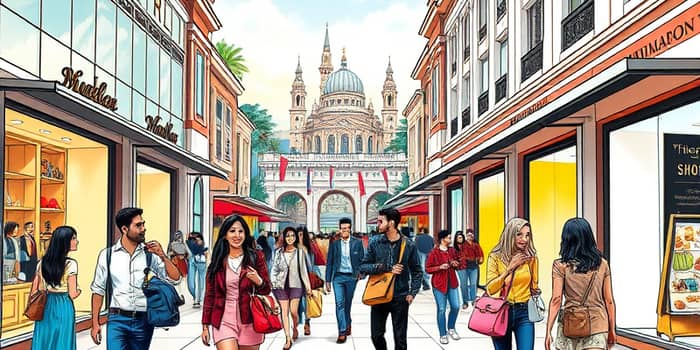
In the wake of travel restrictions and global lockdowns, the luxury goods market faced an unprecedented contraction. With the backdrop of a dramatic pandemic downturn that saw sales growth plummet by 11% in 2020, stakeholders wondered if the sector could ever regain its former glory. Yet as borders reopened and airplanes filled once more, international tourism emerged as a potent engine driving a robust comeback.
By 2021, sales achieved a spectacular 19.5% surge and by 2022, growth reached an impressive 20% rate. This recovery mirrored historical patterns: after the financial crisis of 2008–2009, luxury goods rebounded by 14%, and the post-pandemic bounce exceeded expectations. Brands reported that pent-up consumer demand among travelers and locals alike fueled record quarterly results.
Net profit margins climbed from 5.6% in 2020 to 13.4% in 2022, while return on assets jumped from 3.4% to 9.5% over the same period. However, by 2024 personal luxury sales reached €364 billion—still short of their all-time peak—and analysts forecast a 2–5% decline in 2025, citing U.S. tariffs, weak Chinese consumer confidence, and geopolitical tension as headwinds.
Tourists historically account for a disproportionate share of luxury spending, turning airport duty-free shops and flagship boutiques into global stages. After the pandemic’s lull, travelers unleashed vibrant global purchasing trends, propelling flagship stores in Paris, Milan, and Tokyo to thrive. Luxury brands leaned heavily into absence-driven scarcity, offering exclusive in-store experiences to satisfy wanderlust and style aspirations.
In 2009, emerging economies welcomed 410 million arrivals and generated $306 billion in tourism receipts, underscoring the direct link between travel and high-end consumption. More recently, wellness tourism—a category encompassing spa retreats, medical tourism, and holistic escapes—jumped to $919 billion in 2022, making up 18% of the market and highlighting a shift towards experience-driven spending.
From 2019 to 2023, China fueled over 18% annual growth for luxury goods, but six consecutive quarters of contraction have tempered that momentum. Low consumer confidence, inventory overhang, and a cautious retail environment have collectively dragged global figures downward. Brands are now recalibrating strategies to win back Shanghai and Beijing shoppers with innovative store formats and localized marketing.
The United States has seen volatility driven by trade tariffs and economic uncertainty. In contrast, Middle East, Latin America, and Southeast Asia have emerged as bright spots. Countries such as the United Arab Emirates and Saudi Arabia reported a surge in tourist arrivals, while Brazil and Mexico saw growing interest in luxury experiences. Southeast Asian hubs like Singapore and Bangkok have reestablished their roles as regional shopping destinations.
Price increases accounted for over 80% of luxury sector growth from 2019 to 2023, but inflationary pressure and consumer pushback have revealed a ceiling. Aspirational buyers are more discerning, leading some houses to experiment with entry-level collections and smaller accessories. At the same time, top-tier lines are doubling down on exclusivity and bespoke craftsmanship.
Consumers are exhibiting growing interest in experiences over products, and brands are responding with immersive travel packages, in-store art installations, and curated wellness retreats. This shift has intensified competition not just among maisons, but between retailers and luxury travel operators seeking to capture the same audience.
Despite the optimism of 2021 and 2022, 2025 presents fresh challenges. U.S. import duties on luxury items, subdued demand in China, and geopolitical instability could depress sales by up to 5%. Luxury fatigue—where customers question value for money—adds complexity, forcing brands to balance craftsmanship, storytelling, and price integrity.
Yet the industry’s resilience is well-documented. After each major shock, brands have leveraged pent-up demand and tourism rebounds to restore growth. Many experts predict a more sustained recovery by 2026, provided that travel keeps expanding, macro pressures ease, and brands continue to innovate in service and sustainability.
As international tourism regains momentum, luxury brands have a unique opportunity to reconnect with global consumers. By embracing diversification across emerging markets and deepening experiential offerings, houses can offset regional headwinds and cater to evolving tastes. The path forward lies in marrying heritage craftsmanship with innovative experiences.
For travelers and brands alike, the message is clear: luxury’s revival is inseparable from the thrill of discovery. In the coming years, those who harness the power of tourism, sustainable practices, and creative engagement will lead the next chapter of an industry built on aspiration and aspiration alone.
References













